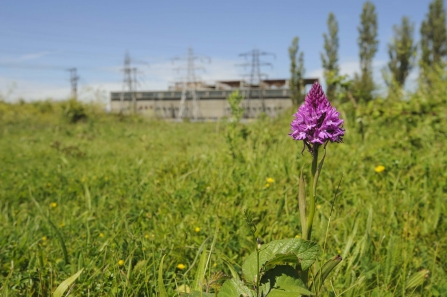©Paul Lane

©Brett Lewis/2020VISION

Marbled White on Pyramidal Orchid ©Guy Edwardes/2020VISION
Pyramidal orchid
The pyramidal orchid lives up to its name - look for a bright pinky-purple, densely packed pyramid of flowers atop a green stem. It likes chalk grassland, sand dunes, roadside verges and quarries.
Scientific name
Anacamptis pyramidalisWhen to see
June to JulySpecies information
About
The pyramidal orchid is a small orchid that lives up to its name - its pink flower spike forms a pyramidal shape. It grows on chalk grassland, coastal habitats, scrub, roadside verges, old quarries and railway embankments. It flowers in June and July, its densely packed flower spike holding up to 100 flowers. It attracts a range of butterflies and moths.How to identify
The pyramidal orchid displays bright pink flowers in a dense, pyramid-shaped cluster at the top of its stem. It has long, narrow and pointed leaves.Distribution
Widespread in England Wales, but scarcer in Scotland.Did you know?
Orchid seeds do not store enough food to grow on their own, so they team up with a mat-forming fungus in the soil. In turn, the orchid’s roots protect the fungus.
©Brett Lewis/2020VISION
